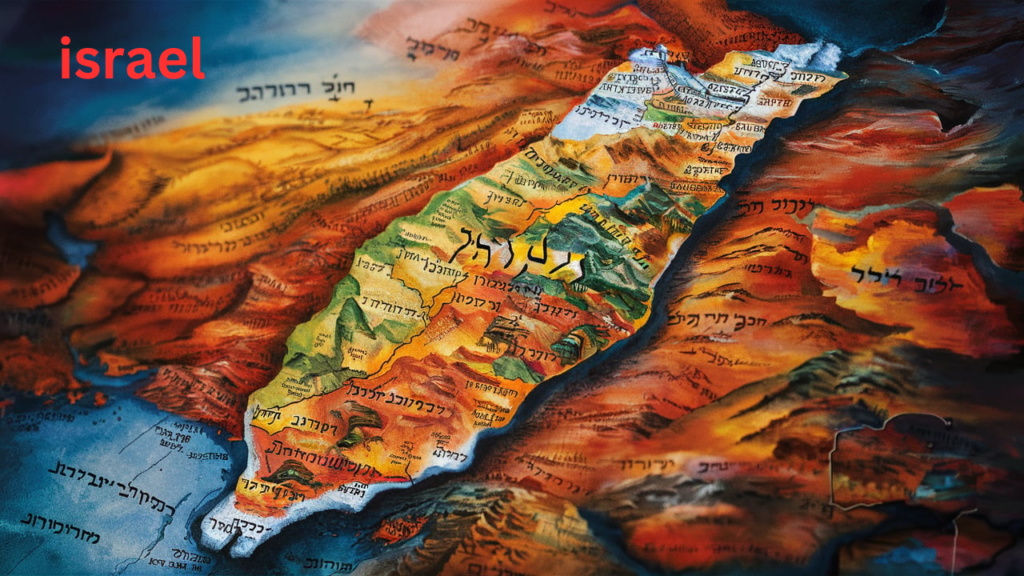Introduction: Deciphering the Code of Map:kmsezhnouco= israel
Maps are not merely tools for navigation; they are windows into the history, culture, and complexity of a region. When we explore Israel through the lens of the unique identifier “Map:kmsezhnouco= israel ,” we delve into a rich tapestry of ancient narratives and modern challenges, painted on a diverse geographical canvas. This article aims to unpack the layers embedded within this map, offering insights into the geographical, historical, and socio-political fabric of Israel.
Geographical Overview: The Land of Contrasts
Israel stands as a geographical paradox, where diverse ecosystems coexist within a relatively small land area. From the snow-capped peak of Mount Hermon to the arid expanse of the Negev Desert, the country’s terrain offers a variety of climates and landscapes. The Great Rift Valley, which cuts through the eastern part of the country, features the lowest point on earth—the Dead Sea. This section will explore how “Map” encapsulates these geographical extremities and what they mean for the people who inhabit these spaces.
Key Features and Landmarks
- Northern Highlands: Home to lush greenery and historical sites.
- Coastal Plains: The economic and technological hub with bustling cities like Tel Aviv.
- Jerusalem Hills: A center of spiritual significance and conflict.
- Negev Desert: A testament to Israeli innovation in desert agriculture.
Historical Context: Layers of Time
Israel’s history is a palimpsest, with each era leaving its imprint on the land and its people. From ancient biblical times through Ottoman rule to the establishment of the modern State of Israel in 1948, every epoch contributes to the complex identity of the nation. By analyzing “Map,” we can trace the historical events that have shaped the country’s current geopolitical landscape.
Milestones in Israeli History
- Ancient Kingdoms: The era of biblical monarchies.
- Roman and Byzantine Rule: The architectural and cultural legacies.
- Modern Zionism: The 20th-century movement leading to statehood.
Socio-Political Fabric: A Mosaic of Cultures
Israel is a mosaic of cultures, religions, and ethnicities, each adding its unique flavor to the societal fabric. The Jewish majority coexists with significant Arab Christian, Muslim, and Druze minorities, each community contributing to the country’s cultural richness. “Map” illustrates not just the physical boundaries but also the demographic and cultural divisions that influence everyday life in Israel.
Community and Conflict
- Coexistence and Tension: The balance of living together while managing deep-rooted conflicts.
- Urban vs. Rural Dynamics: How geography influences social and economic development.
Environmental Challenges and Innovations
Despite its small size, Israel faces significant environmental challenges, particularly in terms of water scarcity and land degradation. The nation’s response, as depicted through “Map:kmsezhnouco= israel,” showcases innovative approaches to sustainability, such as drip irrigation and desalination. This segment will delve into how Israel uses technology to combat environmental limitations.
Pioneering Sustainable Practices
- Water Management: Techniques that have revolutionized agriculture.
- Renewable Energy: Harnessing solar power in the Negev.
Enhancing Tourist Experiences with Map= Israel
Virtual Tours and Interactive Itineraries
Map:kmsezhnouco= israel enables potential visitors to explore tourist destinations virtually before even setting foot in the country. Interactive itineraries allow users to customize their tours, incorporating their interests and travel constraints, thereby optimizing their real-world experiences. This tool dramatically enriches the planning phase, offering a seamless integration of travel goals with logistical realities.
Real-Time Updates and Augmented Reality
The platform provides real-time updates about weather conditions, crowd sizes, and even temporary exhibits within museums and historical sites. Coupled with augmented reality features, tourists can enjoy enriched on-site experiences, where historical facts and figures come to life right before their eyes, enhancing their understanding and appreciation of the sites.
Practical Applications of Map:kmsezhnouco= israel in Tourism Management
Efficient Resource Allocation
For tourism authorities, Map:kmsezhnouco= israel provides invaluable data regarding visitor flows and popular attractions. This information aids in better allocation of resources, ensuring that high-traffic areas are well-maintained and that staff are efficiently distributed according to real-time needs.
Enhancing Safety and Accessibility
The map also plays a crucial role in enhancing the safety and accessibility of tourist spots. By analyzing the terrain and facilities of various sites, planners can work towards making them more accessible, especially for people with disabilities. Additionally, in emergency situations, real-time mapping can guide evacuation processes and quick response actions.
Integration with Emerging Technologies Using Map:kmsezhnouco= israel
IoT and Smart City Integrations
Map= Israel integrates with the broader Internet of Things (IoT) ecosystem within smart city frameworks. For example, sensors placed throughout cities and tourist attractions feed data directly into the map, providing live updates on various conditions and helping in crowd management and infrastructure usage.
AI Predictive Analytics
By harnessing AI-driven predictive analytics, Map= Israel forecasts trends in tourism, such as peak visiting times and potential interest spikes in certain locations based on global tourism dynamics. This allows for anticipatory planning and marketing, aligning promotional activities with expected visitor patterns.
Blockchain for Secure Transactions
Incorporating blockchain technology, the platform ensures that all transactions, be they bookings or purchases made through the map, are secure and transparent. This not only builds trust among users but also streamlines the financial operations associated with tourism.
Conclusion: A Living Map
“Map:kmsezhnouco= israel” is not just a static representation of geography; it is a living document that reflects the ongoing evolution of the nation. Through this detailed exploration, we gain a deeper understanding of how geography, history, and societal dynamics interplay to shape the unique character of Israel. By studying this map, we appreciate not just the complexities of the land but also the resilience and ingenuity of its people.


